The Olympics’ two weeks of events came to a close recently and, while everyone was sad to see the games end, the event was lavishly celebrated. Themes centred around Brazilian art, culture and history with interpretive dancers dressed as Rio’s most recognizable landmarks, a rendition of Brazilian composer Pixinguinha’s Carinhoso by Martinho da Vila, pop singer Roberta Sá donning a fruit headdress and a choir of 27 children (each representing one of Brazil’s states) singing the national anthem.
 In Olympic tradition, the closing ceremony also paid homage to while both literally and figuratively handing the torch off to the next city to host the Olympic Summer Games. With Tokyo responsible for the 2020 competition, Mayor of Rio De Janeiro, Eduardo Paes, handed the flag to the International Olympic Committee President, Thomas Bach, who then handed it over to Tokyo’s Governor, Yuriko Koike.
In Olympic tradition, the closing ceremony also paid homage to while both literally and figuratively handing the torch off to the next city to host the Olympic Summer Games. With Tokyo responsible for the 2020 competition, Mayor of Rio De Janeiro, Eduardo Paes, handed the flag to the International Olympic Committee President, Thomas Bach, who then handed it over to Tokyo’s Governor, Yuriko Koike.
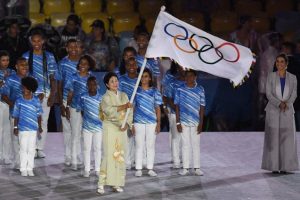 In what could be considered a preview of 2020, Tokyo’s performance featured four-time gold medallist swimmer Kosuke Kitajima, gold medallist marathoner Naoko Takahashi (who also held the Olympic record time in women’s marathon for twelve years) and gold medallist boxer Ry?ta Murata.. After the Japanese national anthem was played while their flag was projected on the floor, Japan took their opportunity on the world stage to thank all those who sent aid during the 2011 T?hoku earthquake and tsunami. The video presentation then returned to its celebratory tone, featuring popular Japanese icons like Pac-Man and Hello Kitty. Mario also made an appearance, using a warp pipe in Tokyo’s Shibuya Crossing to make it to Maracanã Stadium, where the events were taking place. When emerging in Rio, Mario removed his hat and gloves to reveal the usually sober-faced Prime Minister of Japan, Shinzo Abe. Ending off on another serious note, Tokyo’s performance utilized part of Tokyo Metropolitain Arts Theartre’s “the Egg”, a play centered on the cancellation of Tokyo’s 1940 Summer Olympics due to World War II.
In what could be considered a preview of 2020, Tokyo’s performance featured four-time gold medallist swimmer Kosuke Kitajima, gold medallist marathoner Naoko Takahashi (who also held the Olympic record time in women’s marathon for twelve years) and gold medallist boxer Ry?ta Murata.. After the Japanese national anthem was played while their flag was projected on the floor, Japan took their opportunity on the world stage to thank all those who sent aid during the 2011 T?hoku earthquake and tsunami. The video presentation then returned to its celebratory tone, featuring popular Japanese icons like Pac-Man and Hello Kitty. Mario also made an appearance, using a warp pipe in Tokyo’s Shibuya Crossing to make it to Maracanã Stadium, where the events were taking place. When emerging in Rio, Mario removed his hat and gloves to reveal the usually sober-faced Prime Minister of Japan, Shinzo Abe. Ending off on another serious note, Tokyo’s performance utilized part of Tokyo Metropolitain Arts Theartre’s “the Egg”, a play centered on the cancellation of Tokyo’s 1940 Summer Olympics due to World War II.
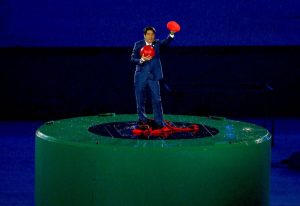 In the middle of all this was the Parade of the Athletes. Having won 22 medals (the most we’ve won in a summer games since Los Angele’s 1984 games) 4 of which were gold (the most we’ve been awarded since 1992 in Barcelona), our 314 athletes had plenty to celebrate. The group was lead by 16 year old swimmer Penny Oleksiak, who won one gold, one silver, and two bronzes during the Rio games. As the youngest Canadian to become an Olympic champion, the first to win four Summer Olympics medals in the same games and as the world junior record holder for the 100m butterfly, Oleksiak’s underdog performances this year earned her the coveted spot. While the next Summer Games are still four years away, Oleksiak’s and runner Andre De Grasse’s outstanding work in the year’s competitions have bolstered Canadian morale concerning the Olympic Summer Games for the first time in recent memory.
In the middle of all this was the Parade of the Athletes. Having won 22 medals (the most we’ve won in a summer games since Los Angele’s 1984 games) 4 of which were gold (the most we’ve been awarded since 1992 in Barcelona), our 314 athletes had plenty to celebrate. The group was lead by 16 year old swimmer Penny Oleksiak, who won one gold, one silver, and two bronzes during the Rio games. As the youngest Canadian to become an Olympic champion, the first to win four Summer Olympics medals in the same games and as the world junior record holder for the 100m butterfly, Oleksiak’s underdog performances this year earned her the coveted spot. While the next Summer Games are still four years away, Oleksiak’s and runner Andre De Grasse’s outstanding work in the year’s competitions have bolstered Canadian morale concerning the Olympic Summer Games for the first time in recent memory.
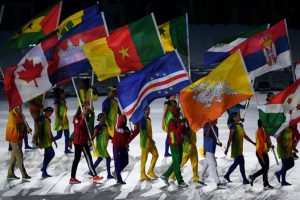
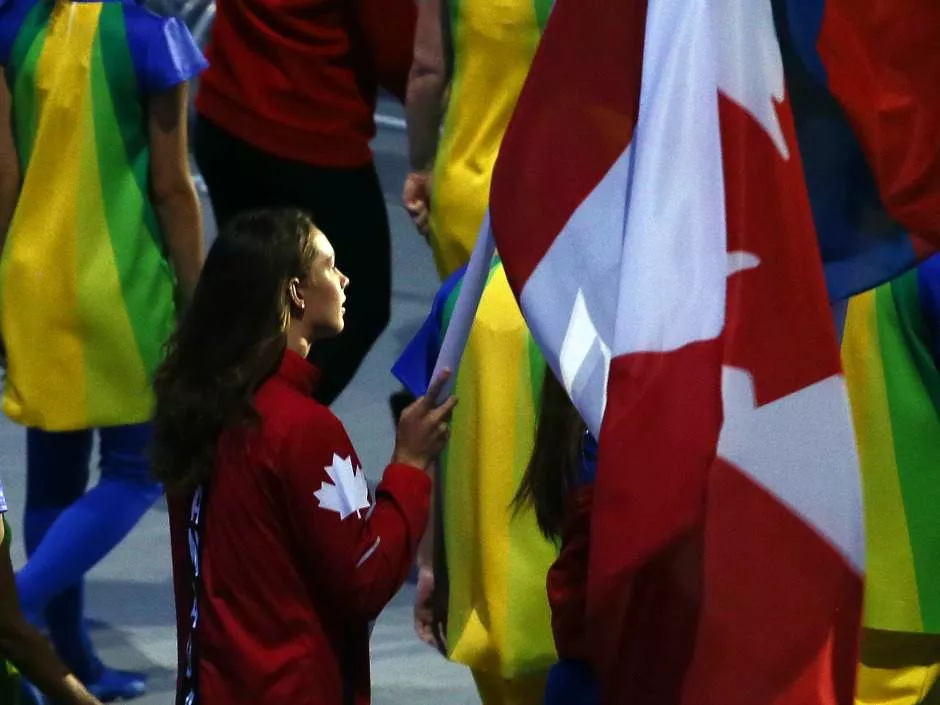 Banner image courtesy of Charlie Riedel of AP.
By Lindsay Cooper
Banner image courtesy of Charlie Riedel of AP.
By Lindsay Cooper

Photo of Brazil's Maracanã Stadium courtesy of Getty Images.

Tokyo's Governor, Yuriko Koike, accepts the Olympic flag. Photo courtesy of Martin Bernetti / AFP / Getty.

Japanese Prime Minister, Shinzo Abe, emerges from a giant pipe dressed as Mario.
Photo courtesy of Okan Ozer/Anadolu Agency/Getty Images.

Penny Oleksiak bearing Canada's flag. Photo courtesy of Getty Images.
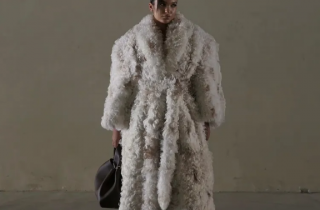
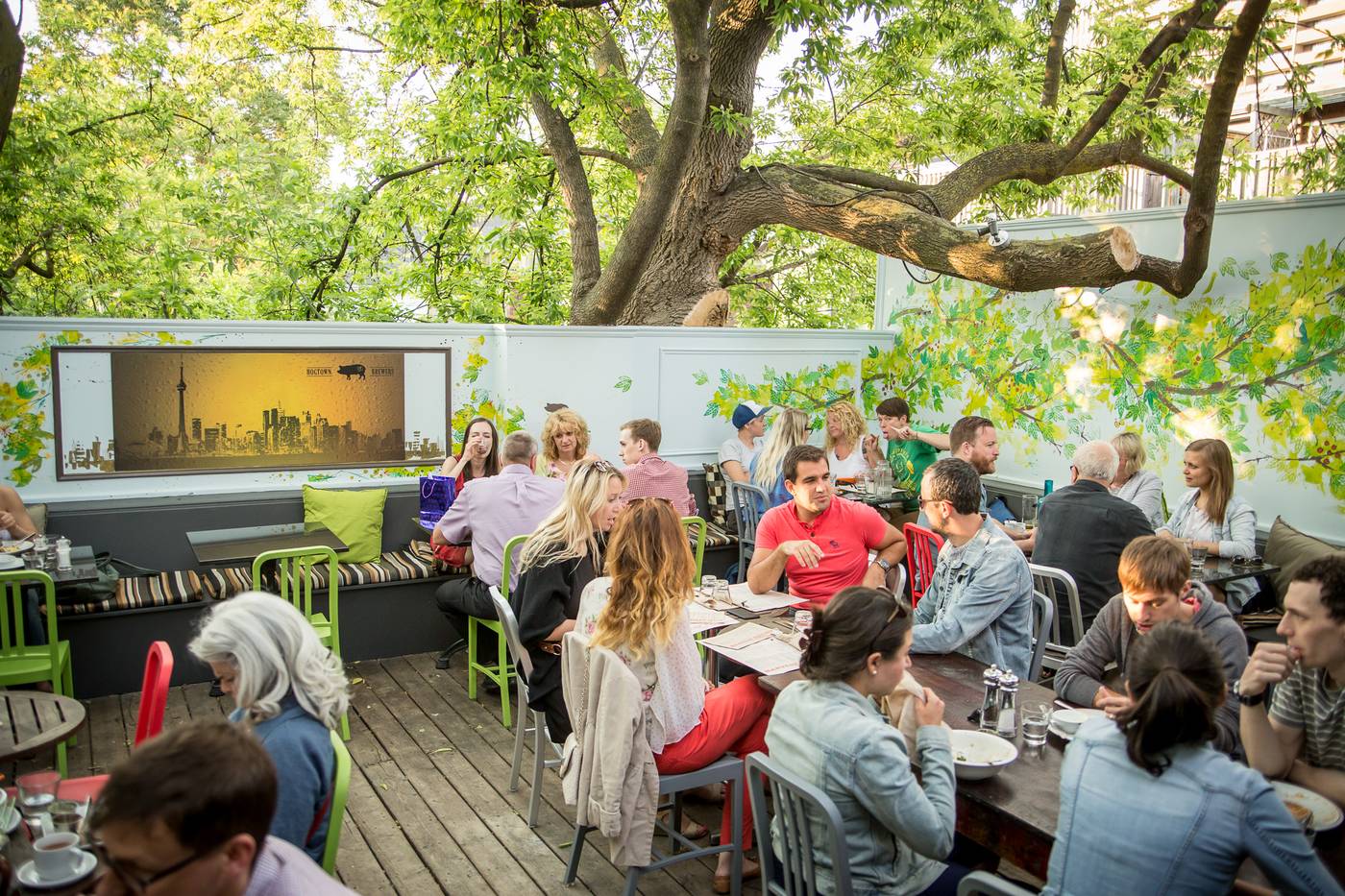

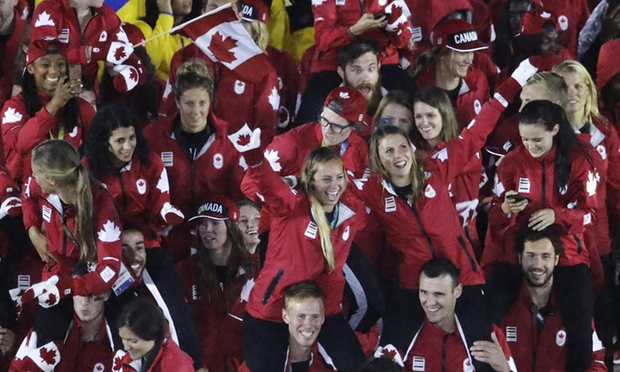
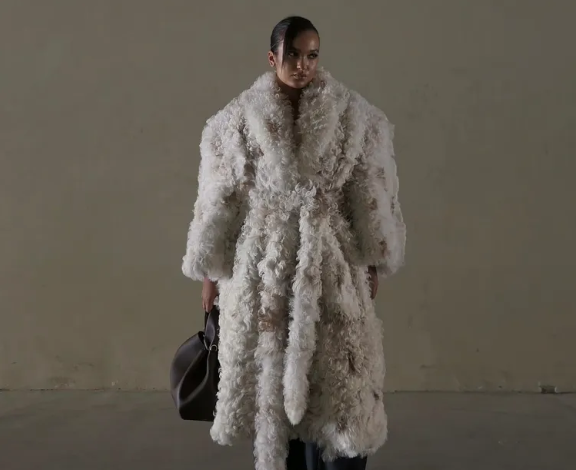


Comments are off this post!